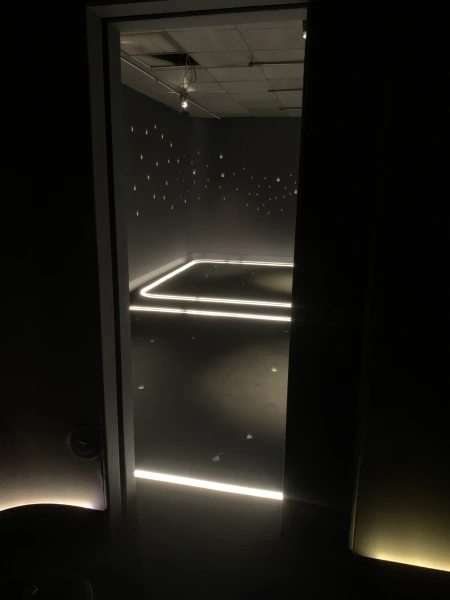A career in lighting design can lead to some unusual experiences like living on a cruise ship in dry dock or spending the night in a shopping mall in Las Vegas. Every once in awhile, the experience opens your eyes.
Just before the pandemic shut down our society, TIME opened THE MARCH at Chicago’s Dusable Museum. Built by our friends at Chicago Scenic Studios, the exhibit was designed by a team that included Local Projects, MAD Systems and TIME. We got to come along to help make the lighting happen. Jessica Doyle, lead project designer, tells us more:

THE MARCH is an innovative and interactive experience that guides the participant through the historic march on Washington in 1963. You get the opportunity to hear personal accounts from people who attended and see video footage of the event itself. Aside from the traditional methods museums employ to present material, at the heart of the exhibit is a cutting edge virtual reality 3D experience. Participants are invited to put on a headset and goggles so that they may experience the March and Dr. Martin Luther King Jr., himself giving the historic speech that remains ever so important today.

We worked closely with the team to illuminate the world that was created to tell this powerful story. Light is often used to guide museum goers through exhibits, and THE MARCH is no exception. Discreet accent lighting is used to highlight graphics and create atmosphere. A unique challenge of the exhibit was lighting the room in which the VR experience occurs. So often we are designing lighting for people, but in this space, it was important to design the lighting with the requirements of the VR technology in mind. It is very sensitive to lighting conditions and requires lighting to be aimed at certain locations and dimmed to certain levels in order for the headsets and goggles to work properly. It was certainly a close collaboration with team members we don’t usually work with, such as computer systems designers.

Just as lighting is an integral part of allowing a home to function, lighting is an integral part of a museum. From aiming a fixture perfectly onto a text graphic to allow for easy reading to ensuring fixtures are dimmed appropriately to help influence how long participants spend in certain areas, lighting allows an exhibit to function how the exhibit designers and producers intend. If it’s done right, those open eyes will have an experience they’ll never forget.
Read the Chicago Tribune review.
Visit the official website.
